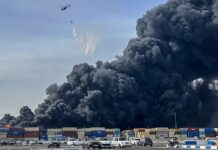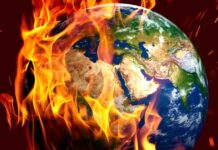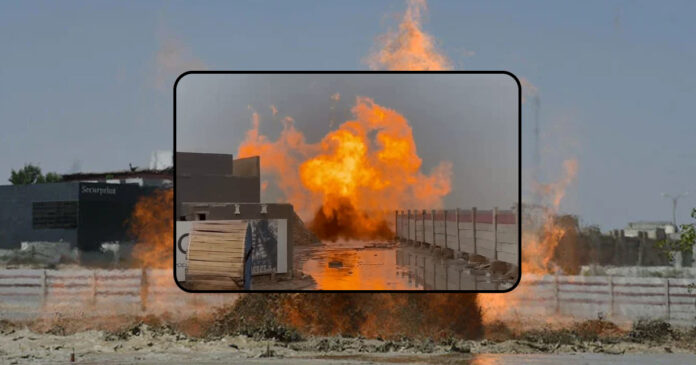The fire that broke out in Karachi’s Korangi area continues to burn for the 10th consecutive day as of Monday, with no sign of being extinguished. The earlier bluish flames have now turned red, signalling incomplete combustion and the release of carbon monoxide.
The blaze began on March 29 after a 1,200-foot-deep bore was drilled at the site. The cause of the fire remains unclear, and there are growing concerns about the kind and volume of the gas fuelling it.
According to sources from Pakistan Petroleum Limited (PPL), a preliminary chemical analysis of the water that emerged from the ditch near the fire has shown the presence of dangerous chemicals. The analysis, based on water samples collected from the fire site, found high levels of benzene, toluene and tetrachloroethylene.
Read more: Fire in Korangi Creek Continues to Burn for the Sixth Day
High Concentration of Chemicals
The initial report stated that tetrachloroethylene was present at 33 microgrammes per litre, which is much higher than the standard limit of 5mg. Benzene was found at 19mg per litre, also exceeding the acceptable threshold of 5mg. Toluene was detected at 15 microgrammes per litre, which is three times more than the recommended level. The report also noted a slightly elevated quantity of o-xylene, although it did not specify the exact amount.
However, the report mentioned that the overall hydrocarbon content in the water remained within safe limits. Authorities are also trying to find out if the chemicals detected in the samples came from toxic waste being dumped into the ground through the Malir River.
While there are companies that specialise in handling such underground fires, there has been no confirmation so far on whether the government or any relevant authorities have contacted such firms or are working on a proper contingency plan. No study has yet been launched to determine the depth or scale of the gas reservoir causing the fire.
Stay tuned to Brandsynario for the latest news and updates.







































